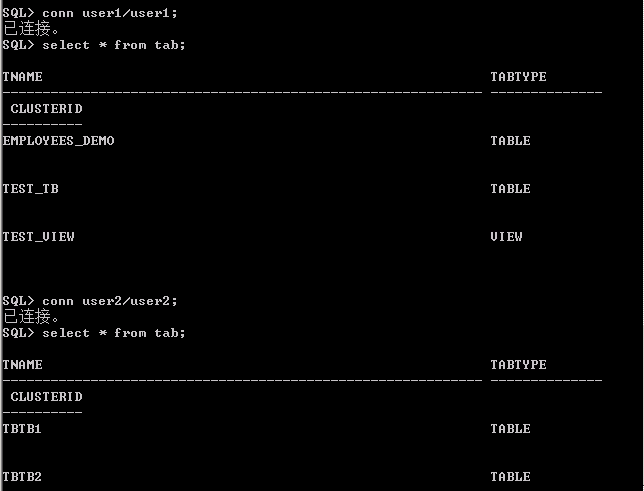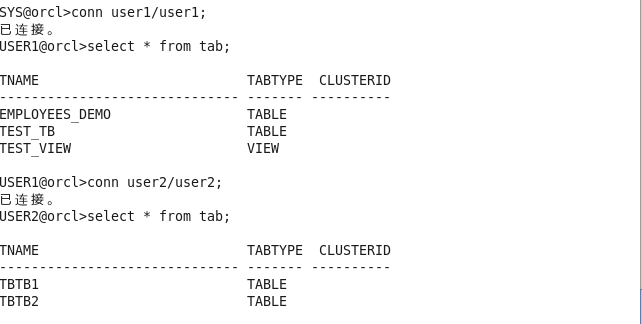将10.10.1.127服务器的数据库ORCL(WINDOWS)迁移到VM 10.10.10.168LINUX平台
操作系统:Windows server 2008r2 64bit
CentOS Linux 6.5 64bit
ORACLE软件:11.2.0.3.0
目录:
- 1. 在源数据库(Windows数据库orcl准备迁移)
2. 用 RMAN 生成迁移文件
3. 修改对应的转换文件
4. 修改对应的 INIT 文件
5. 在目标 LINUX(linux 数据库 orcl)在用 DBCA 创建数据库
6. 删除文件,复制文件
7. 升级
1.在源数据库(Windows数据库orcl准备迁移)
1,检查源库的控制文件,数据文件,日志文件,临时文件,参数文件等!




查看可以转换的平台
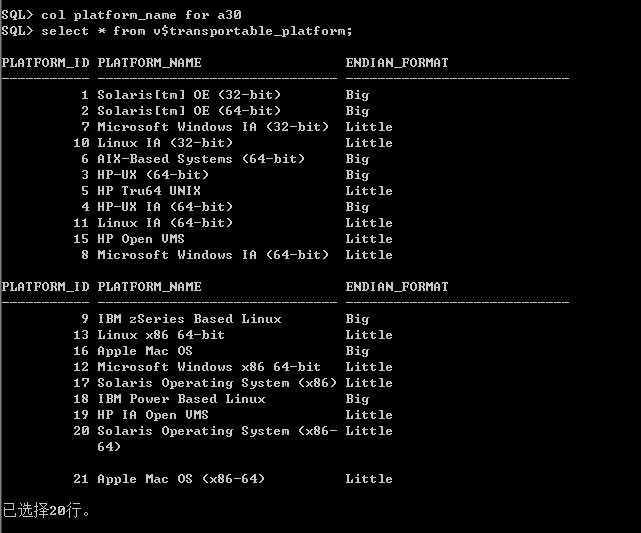
在目标端执行,捕获目标库平台

运行检查包
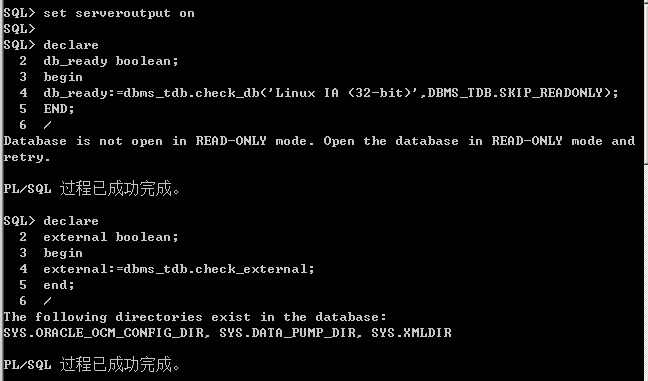
查看归档模式

关闭数据库,将数据库启动到只读模式!
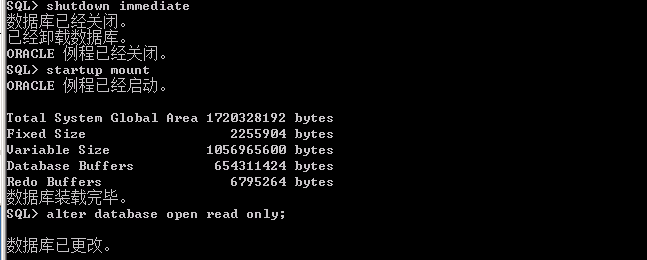
2. 用 RMAN 生成迁移文件
对源数据文件进行转换,并生成升级脚本
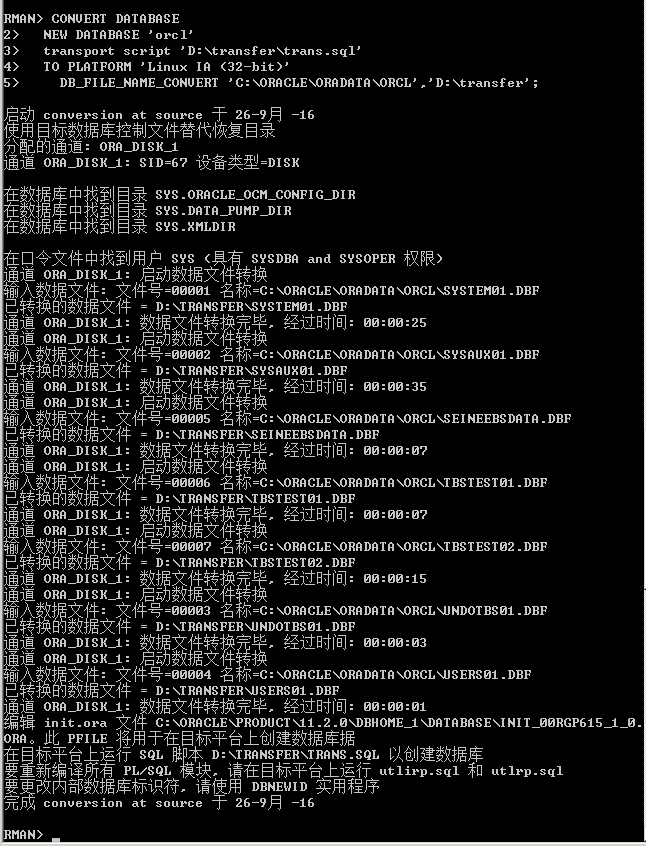
查看生成的数据文件和升级脚本

3. 修改对应的转换文件
更改TRANS.SQL的路劲,对应LINUX平台的路劲
Linux路劲:
ORACLE_BASE=/u01/app/oracle
ORACLE_HOME=/u01/app/oracle/product/11.2.0/db_1
-- The following commands will create a new control file and use it
-- to open the database.
-- Data used by Recovery Manager will be lost.
-- The contents of online logs will be lost and all backups will
-- be invalidated. Use this only if online logs are damaged.
-- After mounting the created controlfile, the following SQL
-- statement will place the database in the appropriate
-- protection mode:
-- ALTER DATABASE SET STANDBY DATABASE TO MAXIMIZE PERFORMANCE
STARTUP NOMOUNT PFILE='C:ORACLEPRODUCT11.2.0DBHOME_1DATABASEINIT_00RGP615_1_0.ORA'
CREATE CONTROLFILE REUSE SET DATABASE "ORCL" RESETLOGS ARCHIVELOG
MAXLOGFILES 16
MAXLOGMEMBERS 3
MAXDATAFILES 100
MAXINSTANCES 8
MAXLOGHISTORY 292
LOGFILE
GROUP 1 'C:ORACLEPRODUCT11.2.0DBHOME_1DATABASEARCH_D-ORCL_ID-1451024903_S-10_T-1_A-923244170_03RGP615' SIZE 50M BLOCKSIZE 512,
GROUP 2 'C:ORACLEPRODUCT11.2.0DBHOME_1DATABASEARCH_D-ORCL_ID-1451024903_S-11_T-1_A-923244170_04RGP615' SIZE 50M BLOCKSIZE 512,
GROUP 3 'C:ORACLEPRODUCT11.2.0DBHOME_1DATABASEARCH_D-ORCL_ID-1451024903_S-12_T-1_A-923244170_05RGP615' SIZE 50M BLOCKSIZE 512
DATAFILE
'D:TRANSFERSYSTEM01.DBF',
'D:TRANSFERSYSAUX01.DBF',
'D:TRANSFERUNDOTBS01.DBF',
'D:TRANSFERUSERS01.DBF',
'D:TRANSFERSEINEEBSDATA.DBF',
'D:TRANSFERTBSTEST01.DBF',
'D:TRANSFERTBSTEST02.DBF'
CHARACTER SET AL32UTF8
;
-- Database can now be opened zeroing the online logs.
ALTER DATABASE OPEN RESETLOGS;
-- Commands to add tempfiles to temporary tablespaces.
-- Online tempfiles have complete space information.
-- Other tempfiles may require adjustment.
ALTER TABLESPACE TEMP ADD TEMPFILE 'C:ORACLEPRODUCT11.2.0DBHOME_1DATABASEDATA_D-ORCL_I-1451024903_TS-TEMP_FNO-1_06RGP615'
SIZE 30408704 AUTOEXTEND ON NEXT 655360 MAXSIZE 32767M;
-- End of tempfile additions.
--
set echo off
prompt ~~~~~~~~~~~~~~~~~~~~~~~~~~~~~~~~~~~~~~~~~~~~~~~~~~~~~~~~~~~~~~~~~~~
prompt * Your database has been created successfully!
prompt * There are many things to think about for the new database. Here
prompt * is a checklist to help you stay on track:
prompt * 1. You may want to redefine the location of the directory objects.
prompt * 2. You may want to change the internal database identifier (DBID)
prompt * or the global database name for this database. Use the
prompt * NEWDBID Utility (nid).
prompt ~~~~~~~~~~~~~~~~~~~~~~~~~~~~~~~~~~~~~~~~~~~~~~~~~~~~~~~~~~~~~~~~~~~
SHUTDOWN IMMEDIATE
STARTUP UPGRADE PFILE='C:ORACLEPRODUCT11.2.0DBHOME_1DATABASEINIT_00RGP615_1_0.ORA'
@@ ?/rdbms/admin/utlirp.sql
SHUTDOWN IMMEDIATE
STARTUP PFILE='C:ORACLEPRODUCT11.2.0DBHOME_1DATABASEINIT_00RGP615_1_0.ORA'
-- The following step will recompile all PL/SQL modules.
-- It may take serveral hours to complete.
@@ ?/rdbms/admin/utlrp.sql
set feedback 6;
------------------------------------------------------------------------------------------------------------------------------------------------------------------------------------------------------------------------------------------------------------------
修改之后的TRANS.SQL文件:
- The following commands will create a new control file and use it
-- to open the database.
-- Data used by Recovery Manager will be lost.
-- The contents of online logs will be lost and all backups will
-- be invalidated. Use this only if online logs are damaged.
-- After mounting the created controlfile, the following SQL
-- statement will place the database in the appropriate
-- protection mode:
-- ALTER DATABASE SET STANDBY DATABASE TO MAXIMIZE PERFORMANCE
STARTUP NOMOUNT PFILE='/u01/app/oracle/product/11.2.0/db_1/dbs/initorcl.ora'
CREATE CONTROLFILE REUSE SET DATABASE "ORCL" RESETLOGS ARCHIVELOG
MAXLOGFILES 16
MAXLOGMEMBERS 3
MAXDATAFILES 100
MAXINSTANCES 8
MAXLOGHISTORY 292
LOGFILE
GROUP 1 '/u01/app/oracle/oradata/orcl/redo01.log' SIZE 50M BLOCKSIZE 512,
GROUP 2 '/u01/app/oracle/oradata/orcl/redo02.log ' SIZE 50M BLOCKSIZE 512,
GROUP 3 '/u01/app/oracle/oradata/orcl/redo03.log ' SIZE 50M BLOCKSIZE 512
DATAFILE
'/u01/app/oracle/oradata/orcl/SYSTEM01.DBF',
'/u01/app/oracle/oradata/orcl/SYSAUX01.DBF',
'/u01/app/oracle/oradata/orcl/UNDOTBS01.DBF',
'/u01/app/oracle/oradata/orcl/USERS01.DBF',
'/u01/app/oracle/oradata/orcl/SEINEEBSDATA.DBF',
'/u01/app/oracle/oradata/orcl/TBSTEST01.DBF',
'/u01/app/oracle/oradata/orcl/TBSTEST02.DBF'
CHARACTER SET AL32UTF8
;
-- Database can now be opened zeroing the online logs.
ALTER DATABASE OPEN RESETLOGS;
-- Commands to add tempfiles to temporary tablespaces.
-- Online tempfiles have complete space information.
-- Other tempfiles may require adjustment.
ALTER TABLESPACE TEMP ADD TEMPFILE '/u01/app/oracle/oradata/orcl/temp01.dbf'
SIZE 30408704 AUTOEXTEND ON NEXT 655360 MAXSIZE 32767M;
-- End of tempfile additions.
--
set echo off
prompt ~~~~~~~~~~~~~~~~~~~~~~~~~~~~~~~~~~~~~~~~~~~~~~~~~~~~~~~~~~~~~~~~~~~
prompt * Your database has been created successfully!
prompt * There are many things to think about for the new database. Here
prompt * is a checklist to help you stay on track:
prompt * 1. You may want to redefine the location of the directory objects.
prompt * 2. You may want to change the internal database identifier (DBID)
prompt * or the global database name for this database. Use the
prompt * NEWDBID Utility (nid).
prompt ~~~~~~~~~~~~~~~~~~~~~~~~~~~~~~~~~~~~~~~~~~~~~~~~~~~~~~~~~~~~~~~~~~~
SHUTDOWN IMMEDIATE
STARTUP UPGRADE PFILE='/u01/app/oracle/product/11.2.0/db_1/dbs/initorcl.ora '
@@ ?/rdbms/admin/utlirp.sql
SHUTDOWN IMMEDIATE
STARTUP PFILE='/u01/app/oracle/product/11.2.0/db_1/dbs/initorcl.ora '
-- The following step will recompile all PL/SQL modules.
-- It may take serveral hours to complete.
@@ ?/rdbms/admin/utlrp.sql
set feedback 6;
4. 修改对应的 INIT 文件
更改参数文件的相关参数路劲
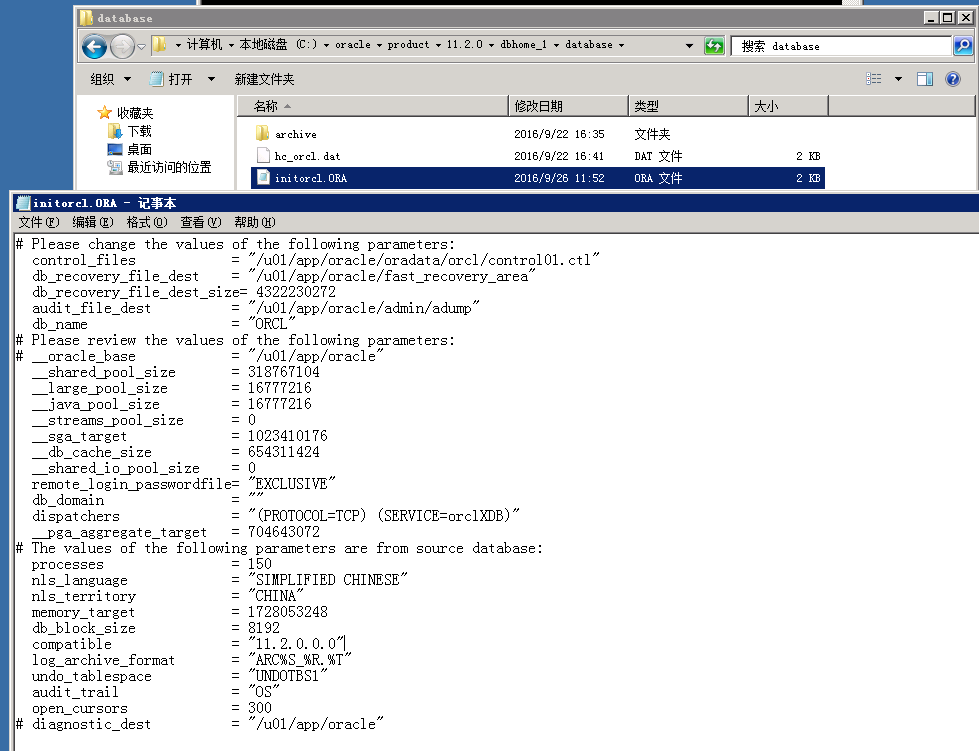
5. 在目标
LINUX(linux 数据库 orcl)在用 DBCA 创建数据库
用DBCA创建ORCL数据库,并将数据文件,参数文件,日志文件和控制文件删除,再把转换好的相应文件复制到linux相应的路劲


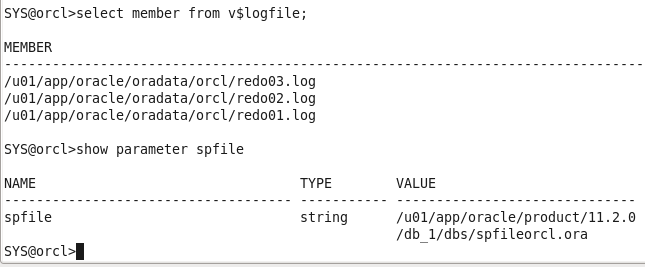
6. 删除文件,复制文件
删除复制后文件后,执行TRANS.SQL脚本



7,升级
执行升级脚本

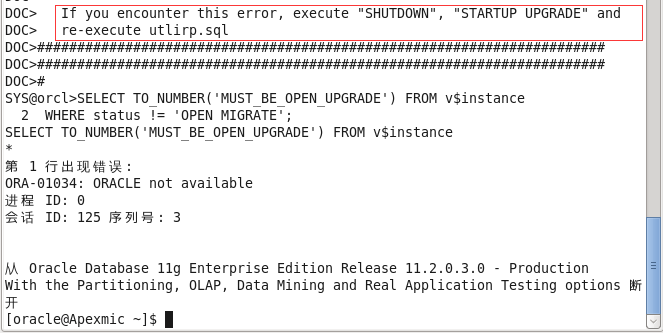
遇到错误,提示将数据库启动到升级模式,再执行UTLIRP.SQL脚本
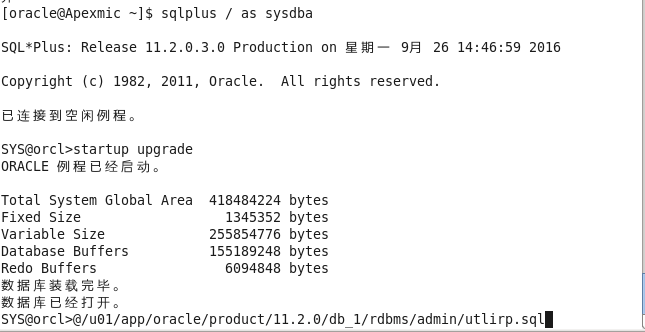
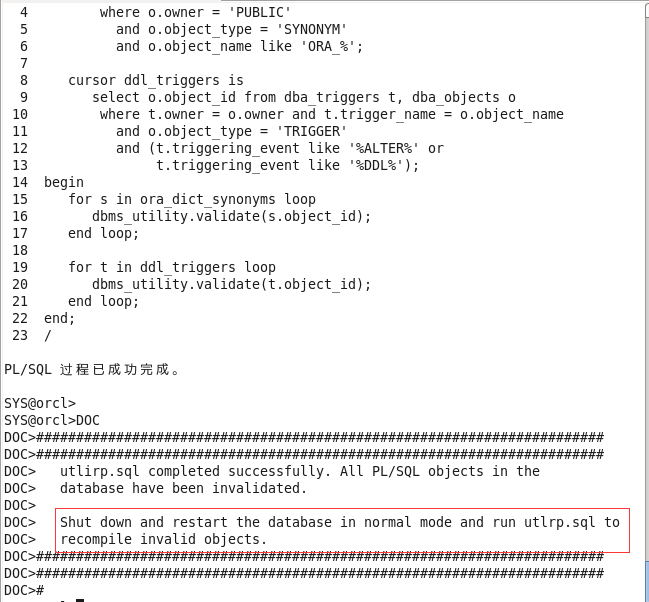
跑完脚本,提示正常关闭和启动数据库,脚本已经执行,可以不用执行
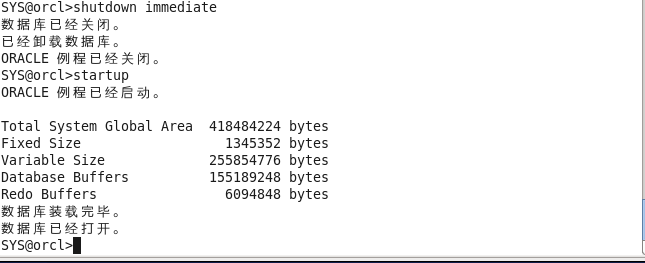
检查数据库的状态和文件
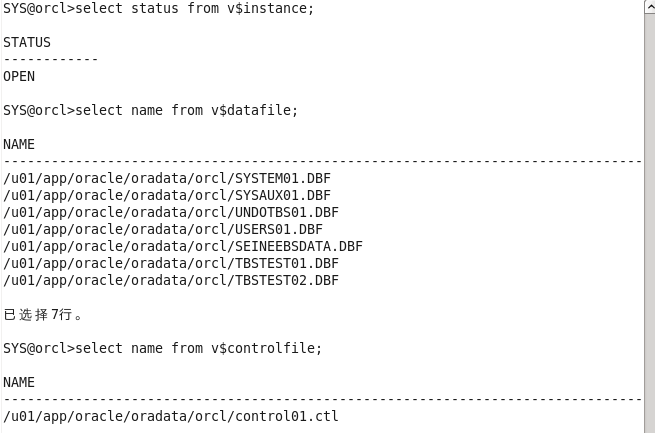

验证数据的有效性
